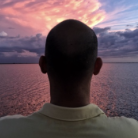Search the Community
Showing results for tags 'Export'.
-
I am a little surprised (perhaps by comparison with every other graphic program I have ever used) that the Save as function only seems to allow saving the image as an Affinity file (*.afphoto). To save an image (even if loaded as a JPEG file) as a JPEG file, for example, one must use the Export dialog. This of course makes a certain amount of sense, given that this process, for any given destination filetype, involves a certain specialized array of settings. And, in contrast, there is no need for any settings when saving as an Affinity file. Its just "unexpected." I also wonder whether the filetype extension "afphoto" is a good idea. Of course is its nicely self-explanatory. But often users have the columns in various file display windows set so that filetype extensions longer than, perhaps, four characters are truncated. But perhaps this is just the playing out of the "long filename" paradigm. Best regards, Doug
-
I do a lot of work with psd files that get exported as DDS files when completed. Does Affinity have any plans to allow the NVidia DDS Utilities to work with Affinity Photo?
-
When exporting JPEG files, the default preset is always "JPEG(High quality)". Does anyone know how to change the default present for saving JPEG? It would be great if I could change the default one to the preset I created. Thank you very much. Regards, Sleepy
-
I've been trying out the new version today having given up previously because of poor export options, I see they've been greatly improved! I would like to use the right workflow for exporting for Android assets. I saw that you can choose lots of options to get for example an .imageset folder for Xcode and this is really great. Android assets are split into sub folders though and there are often 4 or more to create at odd scale factors. What is the best way to do this so I don't have to set up all these scale factors and name all the separate folders I want to export to every time I create a new asset and slice? I saw you can save presets, but can you add and/or create export packages like the one which creates the .imageset package for iOS? Any help on the correct workflow will be gratefully received.
-
Guys congrats on the 1.5 launch, amazing and incredible improvements, Affinity is changing the landscape, very exciting times! Here's suggestion for improving the way AP handles AP>PSD exporting, along with another issue I've posted about where AP crops layers it rasterizes — don't crop my layers even if you need to rasterize them! :) Anyway, it would be great to have an app preference to allow more granularity when rasterizing unsupported layers from AP into PSD from the point of view of non-destructive editing. The current behavior rasterizes both the source layer and any associated Live Filters/etc not supported by PSD format. This obviously destroys the original source layer as it has to be rasterzied. In the interest of preserving a non-destructive workflow, what I'm proposing would do the same thing, but leave the original source layer in the layer stack, either deactivated under the newly rasterized layer and renamed original layer name - rasterized, or group the newly rasterized layer and source layer in a folder on the stack while leaving the source layer turned off, and name the group original layer name - rasterized and the other layers appropriately. In this way, one retain some editablity of the rasterized layer in relation to it's original state – for example I can control it's opacity and be able to scale back the no-longer-editable live effect, and of course I have access to the original layer in case I want to try something else in PSD... Thanks for your consideration and thank you for your amazing efforts!
-
Video Import Considering that we now live in a multimedia era in which most cameras are also capable of shooting video clips, I would like to see support to import such video clips and perform at least very basic operations (i.e., trim, copy & trim, set poster frame, etc.) Then, on export to export to a frame size, format desired (i.e., 4K -> 1080p or 720p, etc.) Such capability is already inherent in Adobe's Lightroom, Apple's basic photos app even. In consideration that most cameras, especially and obviously smart phones) are capable of shooting video clips, and the added fact we now live in a multimedia era of audio and video in addition to just images, it is important to be able to have at lest such basic function to recognize ALL multimedia in a camera and not just a part of it. For full blown video production, of course would use an NLE video post production editor. Media Browser & Catalog Again as examples, both Lightroom and Photos allows one to browse the media of a source (to include BOTH photos and video (above) for browsing and edits. I understand Affinity has a very basic functional capability for this under the photos menu, but it's just not the same. It is minimally functional and useful. I know this falls under the DAM category, but still, a basic integration of a catalog or library would be nice to have versus opening a single photo or a group of photos from the source each time to conduct an edit. Having a set of scrollable thumbnails to pick and choose on-the-fly will be convenient, useful, and productive. I dropped Lightroom because of their subscription model event though they have a very useful and functional browser for said purpose. For the interim I am using Apple's Photos which also has this same function. However, Apple's Photos apps is limited in the editting capabilities and convenience. So, for now I am sort of in limbo. Adobe has the free bridge program, but then I am using a separate application for this function rather then having an integrated solution. Thanks.
-
I currently use Lightroom along with Photoshop Elements for layers and the other Photoshopy features in Windows10. I'd like to replace PSE with AP. However, I'm having one major issue with it. Right now in LR when I want to open an image in PSE, I right click on the image, select 'Edit In' and then select PSE. The image opens in PSE, I do my editing, then I can click File>Save and it saves the TIFF back in the original LR folder in my LR library (great). However, with AP this isn't functioning the same. I can select 'Edit In' and then AP in LR, the image still opens in AP, I can do my editing. But when I go to File>Save it tries to save some afphoto file and its not even in the LR directory. I select Export in AP and it brings up a generic dialog for various export file types and is not pointing to my original LR directory. arrrrgh :( I just want AP to automatically know to point back to the original folder when I try to save a file that was first launched into AP by a call from LR (just as PSE functions now).
-
Insert artboard – wrong size when object has a stroke with Mitre Join. Reproduced on two Macs with non-beta and on Windows with Affinity Designer in beta version. How to reproduce: Create an object eg. rectangle, Set it's stroke width eg. 5pt, Set Join: Mitre Select that object Use Artboard Tool -> Insert Artboard Size of created artboard will be larger than it should be, there is no problem with Brevel and Round Join. As you can see on a picture I attached, there are two rectangles, only difference is the first one has Round Join and the second Mitre Join. Left artboard was created with proper size the second one has strange margin. Sometimes margin is bigger, sometimes smaller – I haven't figured out what it's size depends on.
-
i've been doing more exporting images to web of late, which has seen me hopping between personas a lot more. And stewing. A lot. My reference point vis a vis slices management is FIreworks, which for all of it's many flaws, does several things reasonably well: display and editing of slices, guides and graphic elements simultaneously Export of 8 Bit PNG images with alpha transparency With AD, if I'm trying to optimise elements for better pixel level precision, or even just ensure that multiple elements are fitting multiple slices of a consistant size, there is no way to see or edit those things in one view. So I have to jump back to draw persona, nudge things a bit, maybe pull down a ruler and hope it matches slice borders, go back to export persona to view slices and see if my guesses were close, then repeat, ad infininitum. Clearly what is needed is to allow editing of elements in export persona. Oh, and 8 bit alpha PNG exports. Cheers T
-
Hello Affinity Team, Would it be possible to add Dithering Modes to the Export Persona when exporting PNG-8 or GIF ? Right now it's impossible to use something else than Diffusion. It would be nice if those options were available: - Diffusion - Pattern - Noise - None Also, it would be nice if there was an Export Preview with final file size to see the results before exporting. Right now, it's pretty tedious to blindly export, check the file in the Finder, then go back to Affinity Designer to adjust and repeat the process. Thank you very much, Philippe Côté
-
I use Photoshop for illustration and sometimes Spine for animating my illustrations. I like to move over to Affinity. Spine is supporting different software with a script for exporting transparent PNGs from each layer. The script exports Photoshop layers as individual, cropped PNGs. It writes a JSON file that can be imported into Spine where the images will be displayed in the same positions and draw order using the name of the layers. If there was a script for Affinity I could finally move over from PS. I really like Affinity a lot better... So - is it possible making scripts for Affinity? (As I understand there is no such thing as exporting single layers from Affinity?)
-
I cannot export in any format. Every time I try to export, regardless of option I choose the box opens to save to affinity format. This is a basic test file with a few filled shapes. Is there something I need to do beyond choosing the object and using the Export function. I did this in Drawplus with no issues. I have gone through the help but that does not address any issues, just gives the basic steps which I did. thanks test file.afdesign
-
The Beta version and future release should allow multiple exports of tone mapped images. E.g, a version of Natura, cinematic, crazy etc of the same stack of photo's without need to reprocess each version. I am not sure the language I am using is exact. However, I currently use Canon Photo Professional for HDR and that program allows you to save a natural, bold, art bold and embossed version of the same HDR photo. Thanks,
-
This is more of an accessibility issue than anything else. It took me forever to discover that I had to go to document settings to set the bleed width. I probably won't remember where it is the next time I need it. When exporting a document and checking bleeds, it would make sense to repeat the bleed width inputs there. Or at least making the default value not zero, so it doesn't seem like bleeds aren't working.
-
Summary: Would love to see the "Export Layers As Files" function, where it takes your current document and exports each layer as a separate file to a chosen directory. Usage: Frequently I'll do screencaptures and paste the results into a document. I'll then crop the document to the size of the screencaptured window, but now I have 100 layers of screen captures that I actually want as separate files. This feature would automate that process. Thanks! - Neil
-
It is ambiguous when one does an "export" and select a file format, and then when you save the artwork to the directory that the only option is an "Affinity" file format. It should be whatever file format was selected in the beginning.
-
I'm getting a crash as soon as I click "Export." My file has some company info so can't post here. Can I email it to you?
-
Wanted to put a request in for custom export resolutions - I've heard it's coming in a later release but thought I'd add my use case. I use Affinity Designer for making games using our proprietary games engine. For 2d games I often need to export at multiple resolutions e.g., exporting graphics at half size and doubling them at runtime to save runtime memory - think blurred backgrounds etc. I'm trying to move over to Affinity design from illustrator, the grass feels a little green over here :) In AI i could use a script to export at any scale by specifying the ppi, and give it a location etc. The issue I currently have with AD is that it's being too clever and by doing so is very restrictive. It seems to protect against pixelation of raster graphics by not allowing you to scale up above your base - want 2x then ensure your document setup is set to retina. it only allows 1x 2x and 3x - I often need to scale down or something that isn't 1-3x. It adds a fixed naming convention it doesn't offer separate directories for exporting For Affinity Designer to cater for all pipelines and workflows we need a more relaxed approach. For now I'll have to split my documents up and set the ppi on each accordingly. Keep up the great work.
-
I used to use Apple Mail as my default mail app and love the steps that were saved by using the share feature from within the Affinity apps. Since I moved to Postbox I have lost that feature. Email sharing works in Finder, Photos, Safari, etc to Postbox but will not work in Affinity to Postbox. I talked to the Affinity developers and I think they said that sharing works differently with Affinity? I would love it if someone could get this sorted out so I could share from Affinity to Postbox like could used to do with Apple Mail.
-
Hello, I saw few threads with the same question, but there were no answers since 2015 year. So now, when Windows version is available, is it possible to export Affinity Designer project as fully editable (including text layers) PSD file? I'm really struggling with it. Maybe there are other solutions how to avoid this issue?
-
The ability to export DXF format curves would make it much easier for designing in Affinity and then cutting with a cutter/plotter.














